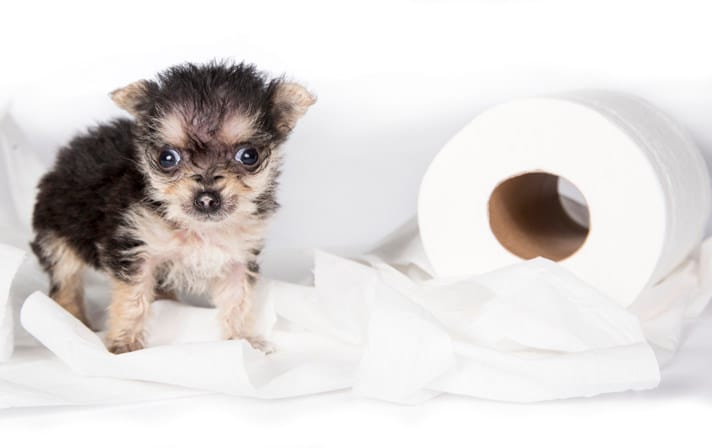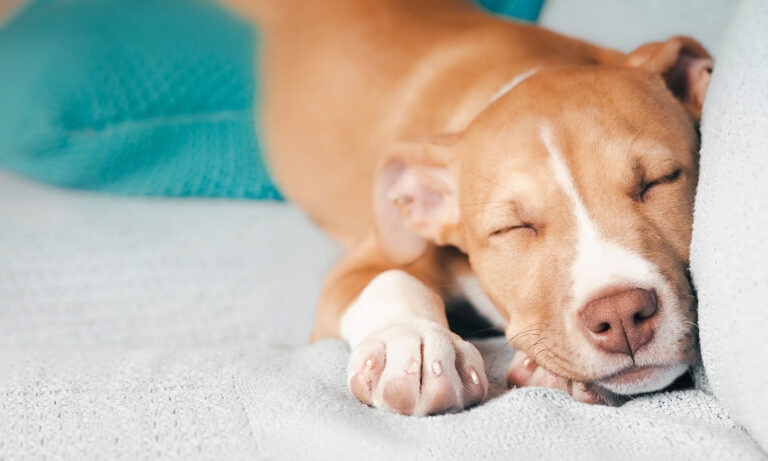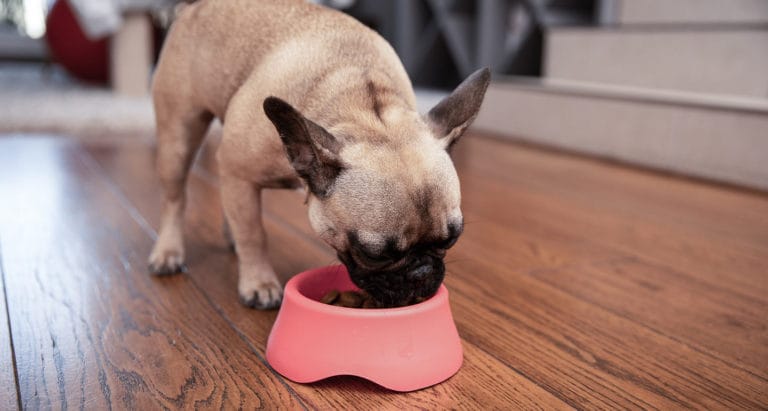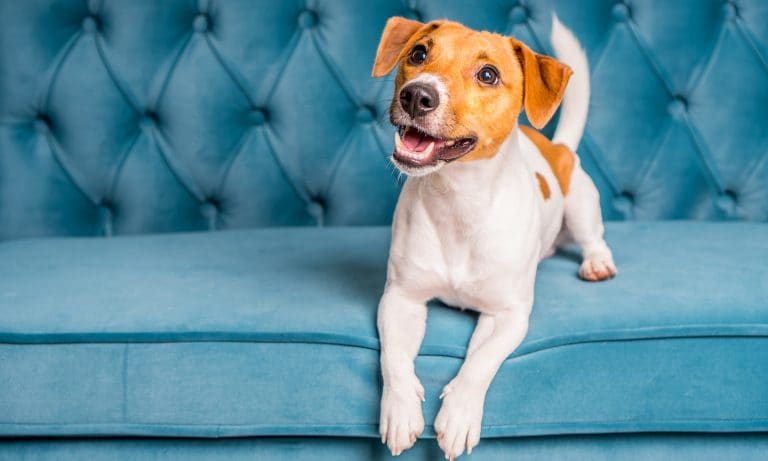I’ll never forget what it was like trying to housetrain my Corgi, Nigel, when he was a puppy. He was nearly 5 months old before he completely caught on. I thought he would never get it until, one day, the lightbulb came on.
Housebreaking a puppy can be challenging, and requires consistency, diligence and patience. Remember that because your puppy is a baby, he needs a lot of time and repetition until going to the bathroom outside becomes routine. Puppies — dogs between the ages of 6 and 18 months, depending on the breed — have short attention spans and less control over their bladders and bowels than older dogs. This means you need to stay on top of the situation to help him learn that outside is the place to do his business. Puppies also have tons of energy and will keep you hopping!
Whenever possible, help your puppy to pee or poop outside so that this becomes a habit for him. Your puppy will eventually associate relieving himself with being outside, and choose only to eliminate out there.
A dog crate might be your best tool in housebreaking your puppy. Dogs instinctively consider the small space of a crate as their den or home, and even young puppies avoid soiling their home. Keep your pup in a crate at night and when you aren’t able to supervise him to encourage him to hold his bladder and bowels.
Puppy Training Pointers
The following techniques worked well for me when I was house-training Nigel:
Use Your Puppies Crate
Feed your puppy inside his crate and give him his favorite dog chew toys when he’s confined. This teaches him that the crate is a good place. Don’t crate him for more than four hours at a time, except at night when you are sleeping. And be sure to give him plenty of exercise and attention during the times he is out of the crate.
Give Frequent Breaks
Young puppies typically need to go every couple of hours. While you are housebreaking your dog, try to take him outside to go to the bathroom every two to three hours. If you are away from home during the day, consider asking a friend or hiring a pet sitter to take your puppy out a couple of times a day while you are gone.
After-Meal Breaks
Puppies typically need to poop soon after eating. Feed your puppy at least twice a day, and do it at a time when you can take him outside within the hour. Then, take him outside for a stroll in the yard so the exercise stimulates a bowel movement.
Restrict Freedom
Do not let your puppy roam around the house at will, or he will go to the bathroom whenever the mood strikes him. This trains him that going indoors is OK — and makes a mess for you to clean up. To restrict his freedom, keep your puppy with you at all times, either on a leash, in his crate or in an exercise pen (available at pet supply stores).
Watch for Signals
Learn the body language or vocalizations of your puppy that signal he has to go. The more time you spend with him, the sooner you will learn these. Most puppies start to sniff around when they are ready. If you are inside and you see your puppy with nose to the ground, take him outside quickly before he has an accident.
Pick a Spot
When teaching your puppy to use the outdoors as his toilet, select a designated spot in your yard where you want him to go. When you take him outside to pee or poop, keep him on a leash and always take him to this area. The idea is to get him in the habit of using this spot as a bathroom.
Establish a Command
Taking your dog outside to go and having to wait 15 minutes or more is too long for most people. Train your puppy to pee on command to avoid this situation. “Go potty!” was my cue to Nigel. Whenever he heard this from me, he knew that I expected him to lift his leg, and soon. How do you teach this? As soon as your puppy starts to pee, give the command. Do this consistently every time and he will come to associate your words with the act of relieving himself. (Nigel became so conditioned to “Go potty!” that he lifted his leg every time he heard it, even when he had an empty bladder.)
Praise Your Puppy
When your puppy goes to the bathroom outside, give him plenty of kudos. Tell him what a wonderful boy he is, in your most enthusiastic voice. Wait until he has completed the act before you do this, though — you don’t want to distract him while he’s relieving himself.
Establish a Routine for the Little One
Feed your puppy around the same times each day, and take him outside for pottying and playing afterwards. Having a routine helps him learn the concept of going to the bathroom outside, not whenever the urge strikes.
Never Punish a Puppy
The best way to teach your puppy is by praising good behavior and ignoring mistakes. Never hit a puppy with a rolled up newspaper if he goes to the bathroom in the house. This is abusive and ineffective.
By: Audrey Pavia
Featured Image: Gina Cioli/I-5 Studio
Share:









